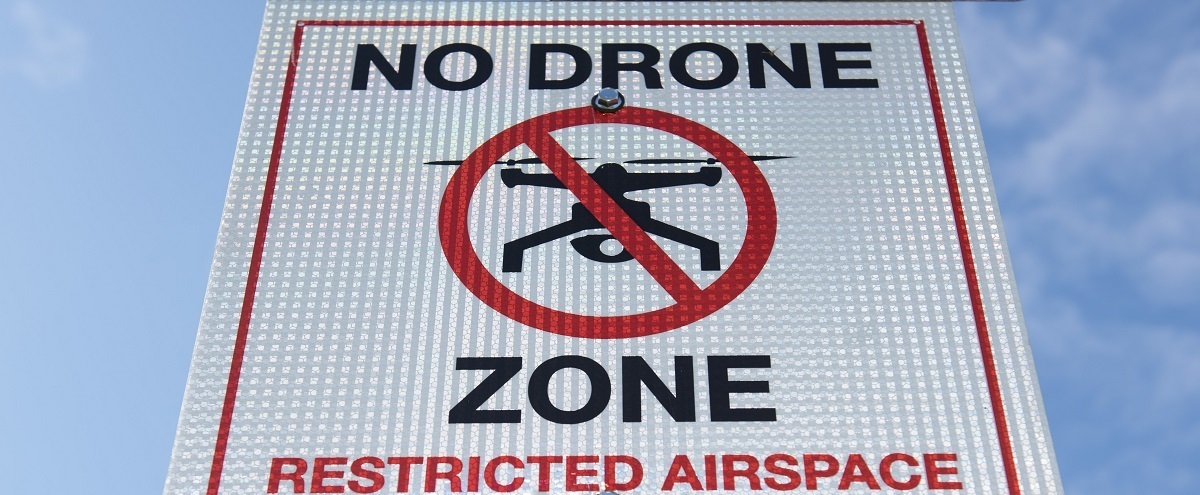These areas are carefully managed to preserve their ecological balance and provide a sanctuary for wildlife.
The presence of drones can disrupt the natural behavior and habitats of wildlife, causing unnecessary stress and disturbance.
Additionally, drones can have a negative impact on sensitive vegetation, especially in fragile ecosystems.

Moreover, the safety of visitors is a paramount concern in national parks and wildlife refuges.
Unmanned aerial vehicles such as drones can pose a risk to hikers, campers, and wildlife observers.
The unpredictable movements and potential accidents associated with drone flights can cause injuries and property damage.
The airspace around these facilities is heavily regulated due to the potential risks drones pose to manned aircraft operations.
Drones can interfere with the operation of aircraft, posing a serious risk to aviation safety.
It is crucial to respect these regulations and refrain fromflying drones near airportsor heliports.
Ignoring these restrictions not only puts aviation safety at risk but also violates the law.
Violators can face severe penalties, including fines and legal action.
As a result, flying drones near or over military bases is strictly prohibited.
The restrictions are in place to protect the privacy, security, and operational integrity of these facilities.
Drones can pose a significant security threat when operating in proximity to military bases.
They have the potential to gather sensitive information, perform surveillance, or even be used as a weapon.
The unauthorized presence of drones in these areas can compromise national security and disrupt military operations.
Additionally, military bases often have restricted airspace where manned aircraft engage in training exercises and other operational activities.
It is important to note that military bases may have additional local regulations specific to their jurisdiction.
It is crucial to prioritize safety and compliance in these areas to avoid any potential harm or legal consequences.
The small size and maneuverability of drones make them difficult to detect and intercept.
Moreover, drones flying over prisons can infringe upon the privacy of inmates.
Given these concerns, most countries have implemented strict regulations regarding drone flights near prisons and correctional facilities.
Violating these restrictions can result in legal consequences and severe penalties.
The ban on drone flights in these areas is primarily driven by security concerns.
Unauthorized drone operations near government buildings can disrupt normal operations and compromise the integrity of sensitive information.
Government buildings and landmarks are often protected by special security measures and have restricted airspace.
Violating these regulations can not only result in legal consequences and fines but also endanger public safety and security.
It is essential to be aware of the rules and regulations specific to each government building or landmark.
Consult the appropriate authorities or local law enforcement agencies to understand the restrictions surrounding drone flights in these areas.
The presence of drones in the airspace above stadiums can pose significant safety risks.
Furthermore, drones equipped with cameras can infringe upon spectators privacy rights.
This information is typically available on their websites or can be obtained through official channels.
As a result, flying drones near or over emergency scenes and disaster areas is strictly prohibited.
In critical situations, any delay sparked by unauthorized drone operations can be a matter of life or death.
These are sensitive and vulnerable situations where people may be experiencing distress or trauma.
Unauthorized drone flights can further exacerbate their distress and violate their privacy rights.
Most countries have strict regulations governing drone operations in emergency zones and disaster areas.
Violating these regulations carries significant penalties and may hinder the work of emergency responders.
Drones can disrupt the peaceful atmosphere and serenity of national monuments and historic sites.
Furthermore, drones can pose a risk to the physical integrity of these sites.
The close proximity of drones to delicate structures or fragile artifacts increases the potential for accidental damage or destruction.
The safety of visitors and the conservation of these important cultural assets are paramount considerations.
Most countries have specific regulations in place for flying drones near national monuments and historic sites.
Violating these regulations can result in penalties, fines, and legal consequences.
The presence of drones in the vicinity of power plants can pose significant risks.
Drones can provide an aerial perspective and valuable reconnaissance tool that could compromise the security of these critical facilities.
Given these concerns, flying drones near or over power plants and electricity facilities is strictly regulated.
These permits often require coordination with facility operators and adherence to specific safety protocols.
Drones can malfunction, lose control, or collide with individuals, leading to injuries or property damage.
The dense concentration of people in these areas further increases the risks associated with drone flights.
Privacy is another crucial consideration.
Drones equipped with cameras can intrude upon peoples personal privacy by capturing photographs or videos without their consent.
The invasion of privacy can cause discomfort and breach the trust of individuals attending these public gatherings.
Drones can distract performers, disrupt the line of sight for spectators, and interfere with the events logistics.
Unauthorized drone flights in these areas can lead to chaos and potential accidents.
Regulations surrounding drone flights in crowded public spaces and events vary by country and local jurisdictions.
It is crucial to familiarize yourself with the specific rules and permissions required for flying drones in these areas.
Event organizers and local authorities often provide guidelines and permits for authorized drone operations.